Predicting the power of every legendary in Hearthstone's The Witchwood
In which our high-legend expert foresees continued servitude to our Warlock overlords.
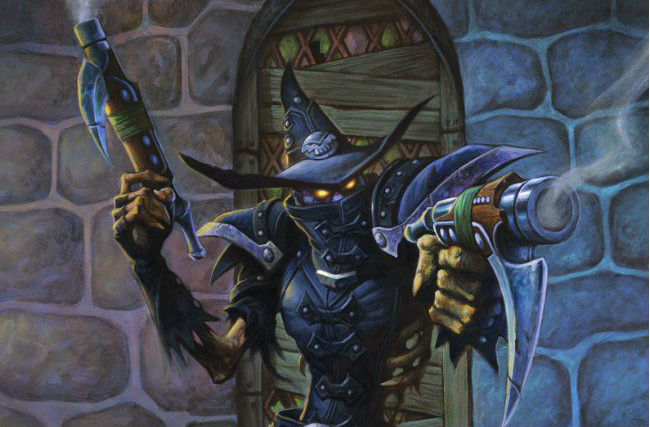
Every card has now been revealed from Hearthstone's next expansion, The Witchwood, which means that we've got a good sense of the power level of this set's legendaries. As readers of our regularly updated list of the 20 most powerful legendaries in Standard already know, choosing which cards to craft is a crucial decision for players with all but the deepest pockets. Before blowing your precious dust, it's important to sort the next Dr. Boom from all the Troggzors.
Predicting the power of cards isn't an exact science, but four years into Hearthstone's life, it's getting easier to call which legendaries are likely to dominate the next meta, which will begin on April 12 when The Witchwood launches. Here we go class by class, and then on the next page run the rule over the neutral legendaries.
Shaman
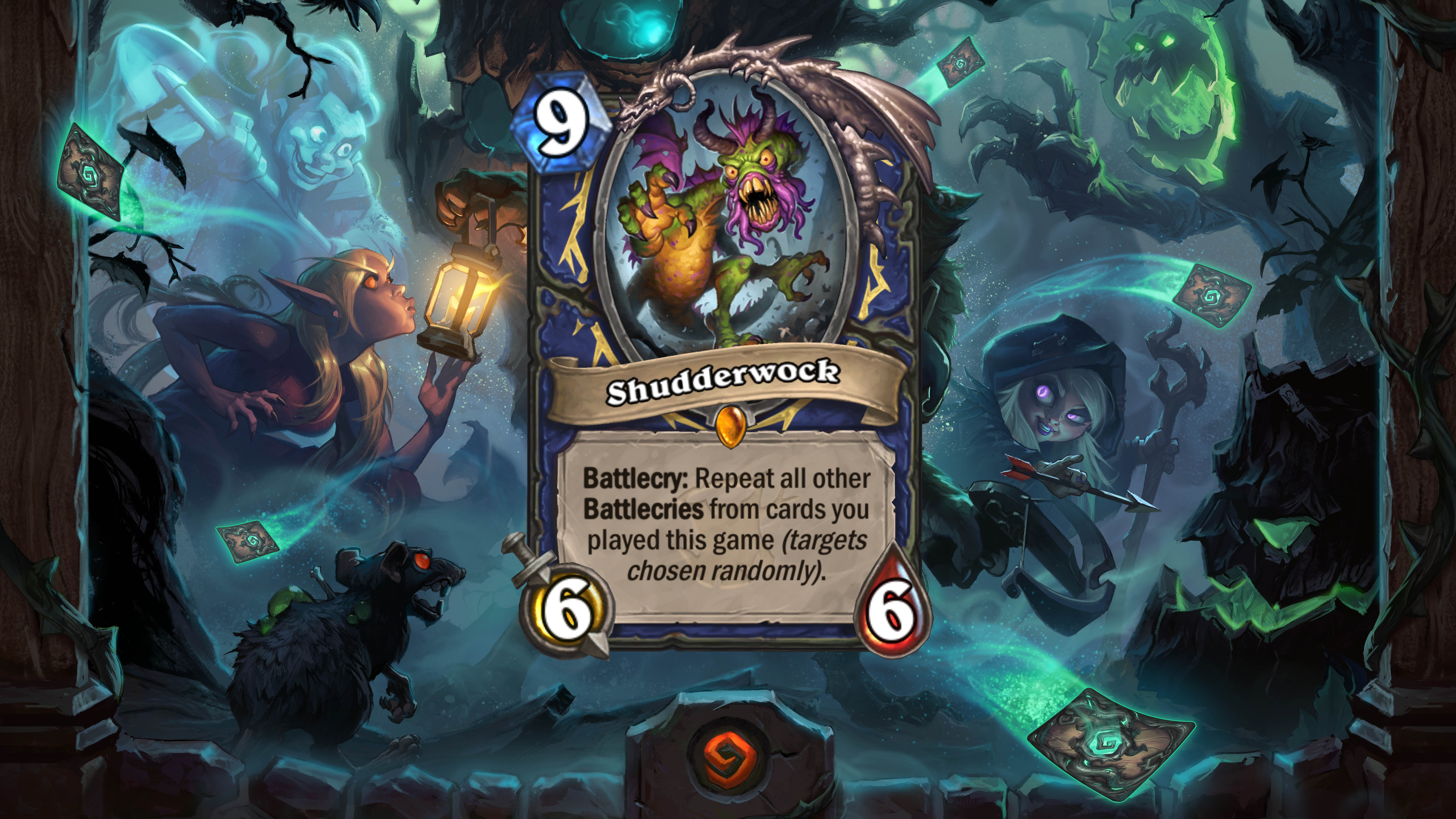
Shudderwock: A quick skim of the best Shaman Battlecry effects reveals that they're usually targeted. This includes just about all the Elementals (except Kalimos and his servant), meaning that the outcomes could go wrong, much like an enormous Mad Bomber. As per Yogg pre-nerf, Shudderwock will keep going if it happens to kill itself, but where this differs from Yogg is that you're less likely to clear the opponent's board in the process. Most of the other playable, non-targeted Battlecry effects do things like add cards to your hand. Drawing a bunch of cards isn’t bad, but not the kind of game-breaking impact you’d expect from a 9-cost card. This is one of those difficult to assess cards, simply because of the range of effects it can have, but outside of Chain-Gang synergy and Kalimos, there doesn’t seem to be a ton of effects that really make Shudderwock a winner. It could be better than I’m giving it credit for, but I don’t really see this as much more than a large value generator.
Rating: 5/10 (Too average)
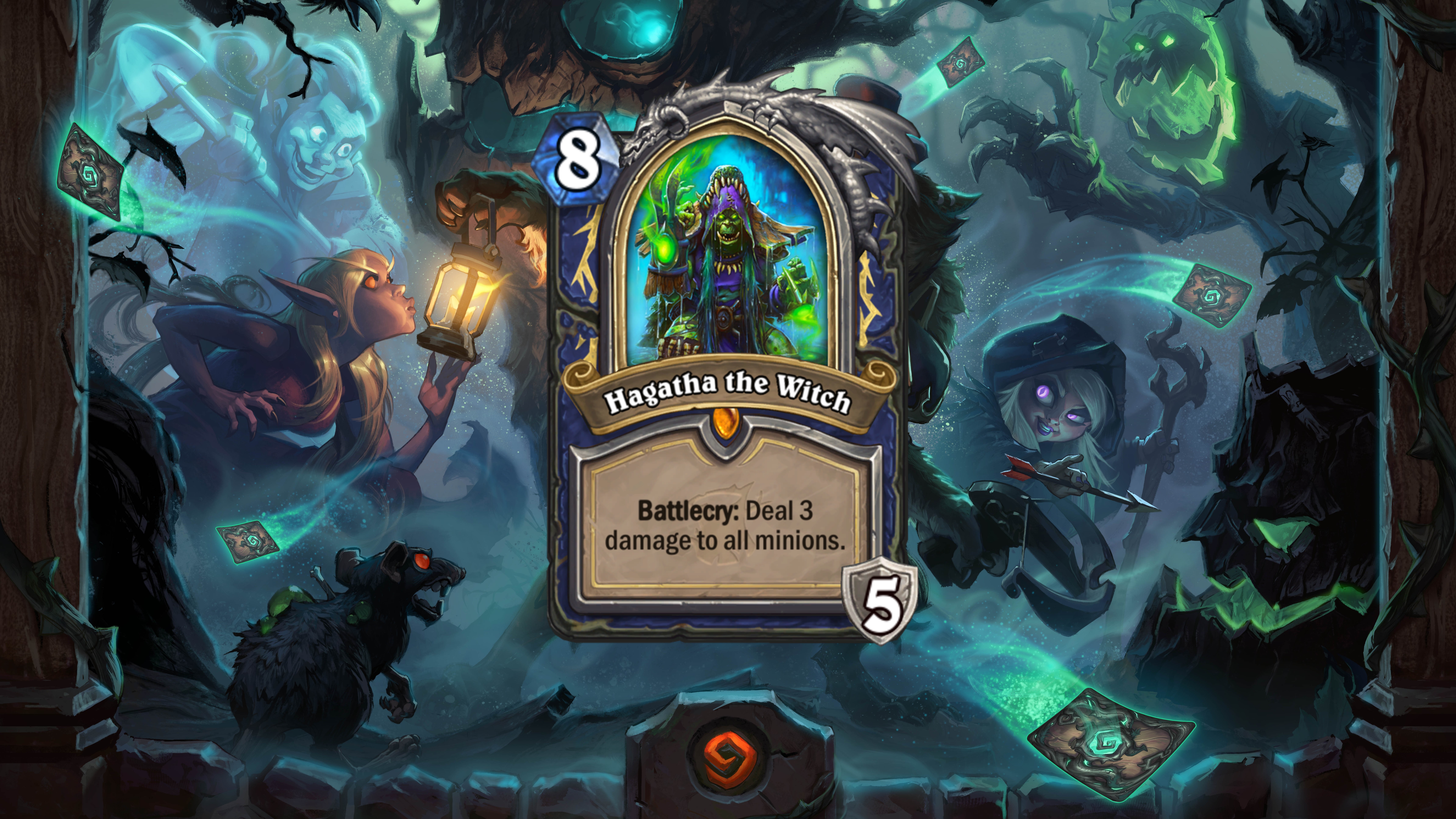
Hagatha the Witch: The creation of Hero cards has been one of Team 5's biggest successes, with every Death Knight seeing play in some context. For cards which mostly cost more than 7 mana, that’s remarkable. I think Hagatha is going to follow that trend. The Battlecry alone is powerful, even at that stage of the game. The passive hero power can also generate tons of gas for Shaman and in relatively short order, especially with cards like Firefly and Grumble still in Standard. As late-game reload, Hagatha has a lot to offer. The complicating factor is that it's much more difficult to plan your game around her passive effect than other existing Hero cards. The question isn’t whether she’s good, so much as it requires figuring out what deck she’ll be best in and how that matches up against the meta.
Rating: 7/10 (Has potential)
Warrior
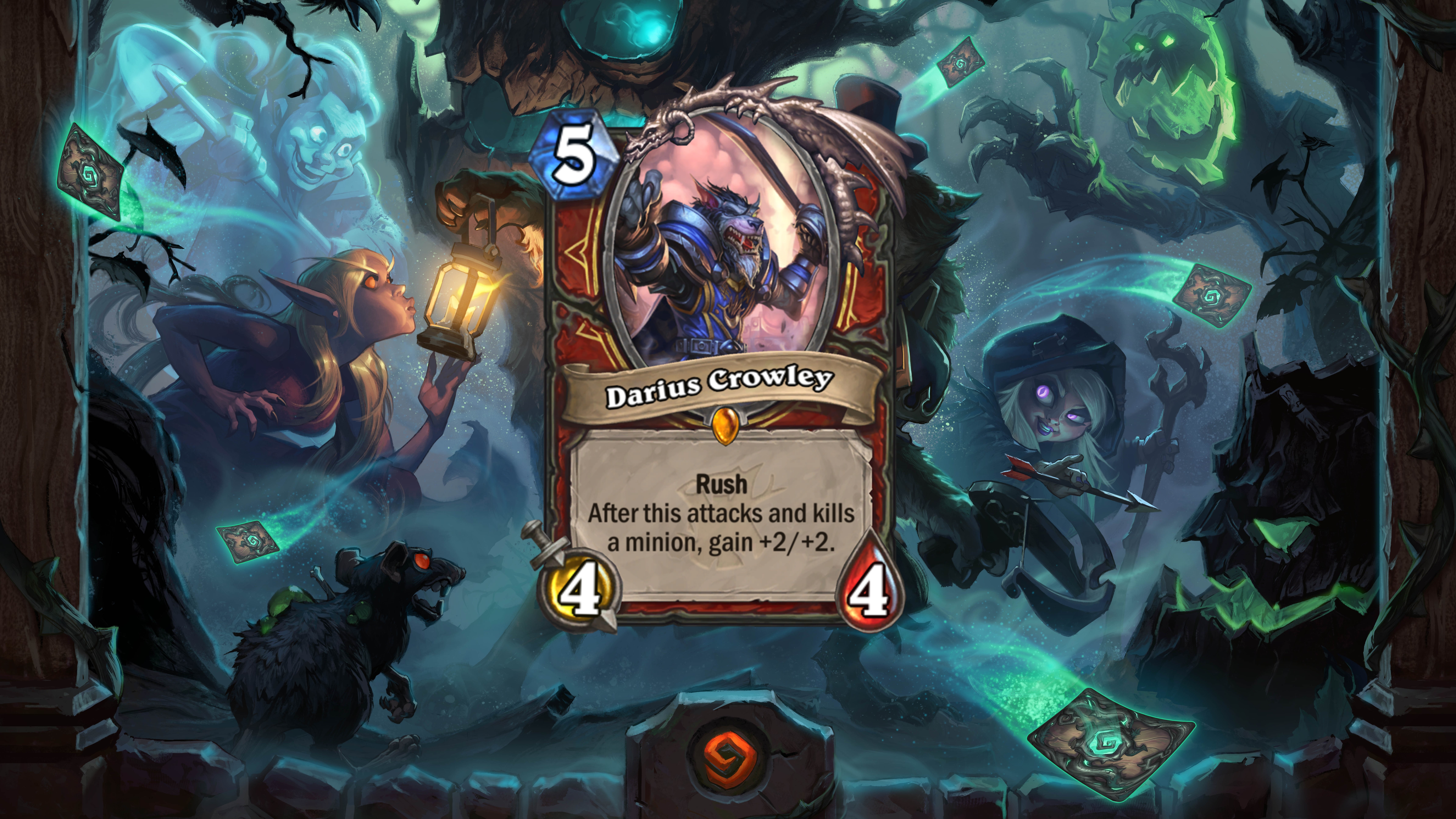
Darius Crowley: Hey, it's the lovechild of The Boogeymonster and Druid of the Claw’s cat form. It’s easy to compare Darius with one of Hearthstone's least-loved meme legendaries and think that this card will be bad as well, but Darius does have two things going for him that should raise some eyebrows. First, he has an immediate impact on the board, and second he has the potential to snowball a game. Darius can easily two-for-one your opponent in many situations and needs to be dealt with quickly, making him suited to a tempo-based deck rather than slower shells. However, there are also times Darius will be staring down a Voidlord, Rotten Applebaum, or even just a Tar Creeper and feel pretty sad about it.
Rating: 7/10 (Has potential)
The biggest gaming news, reviews and hardware deals
Keep up to date with the most important stories and the best deals, as picked by the PC Gamer team.
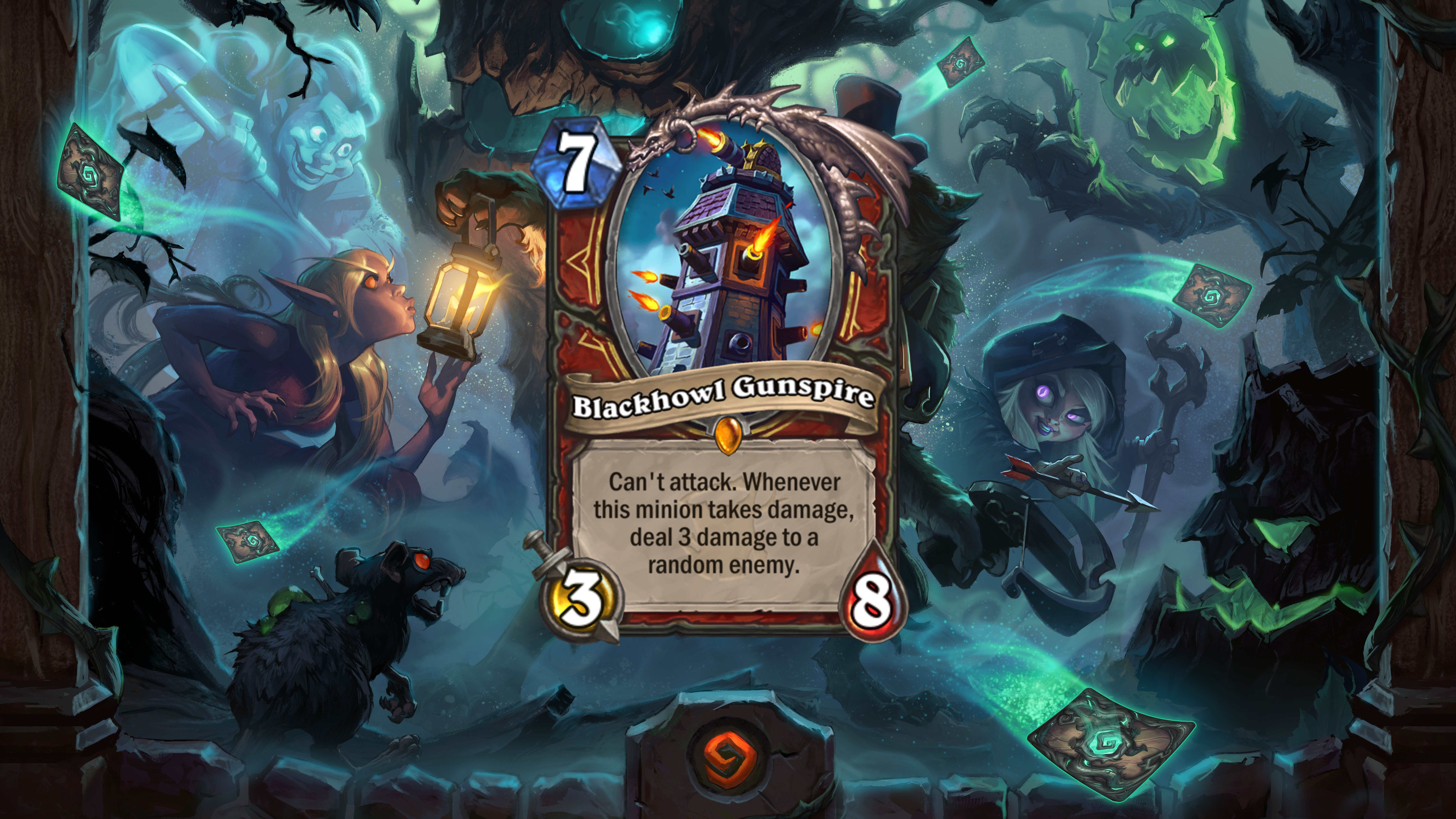
Blackhowl Gunspire: The prospect of spending seven mana on a relatively small pile of stats that does nothing immediately doesn’t sound like the stuff that snazzy legendaries are made of. With lots of whirlwind effects available to Warrior, this could be a board clear and burst potential in one, provided it doesn’t get silenced. Or hard removed. Or you’re missing activators. Or you just get run over on board the following turn. What I do like about this card is that you can cheat it out with Master Oakheart, which can help solve that mana problem I mentioned. Will that become the best version of Warrior? Call me a skeptic.
Rating: 4/10 (Too weak)
Rogue
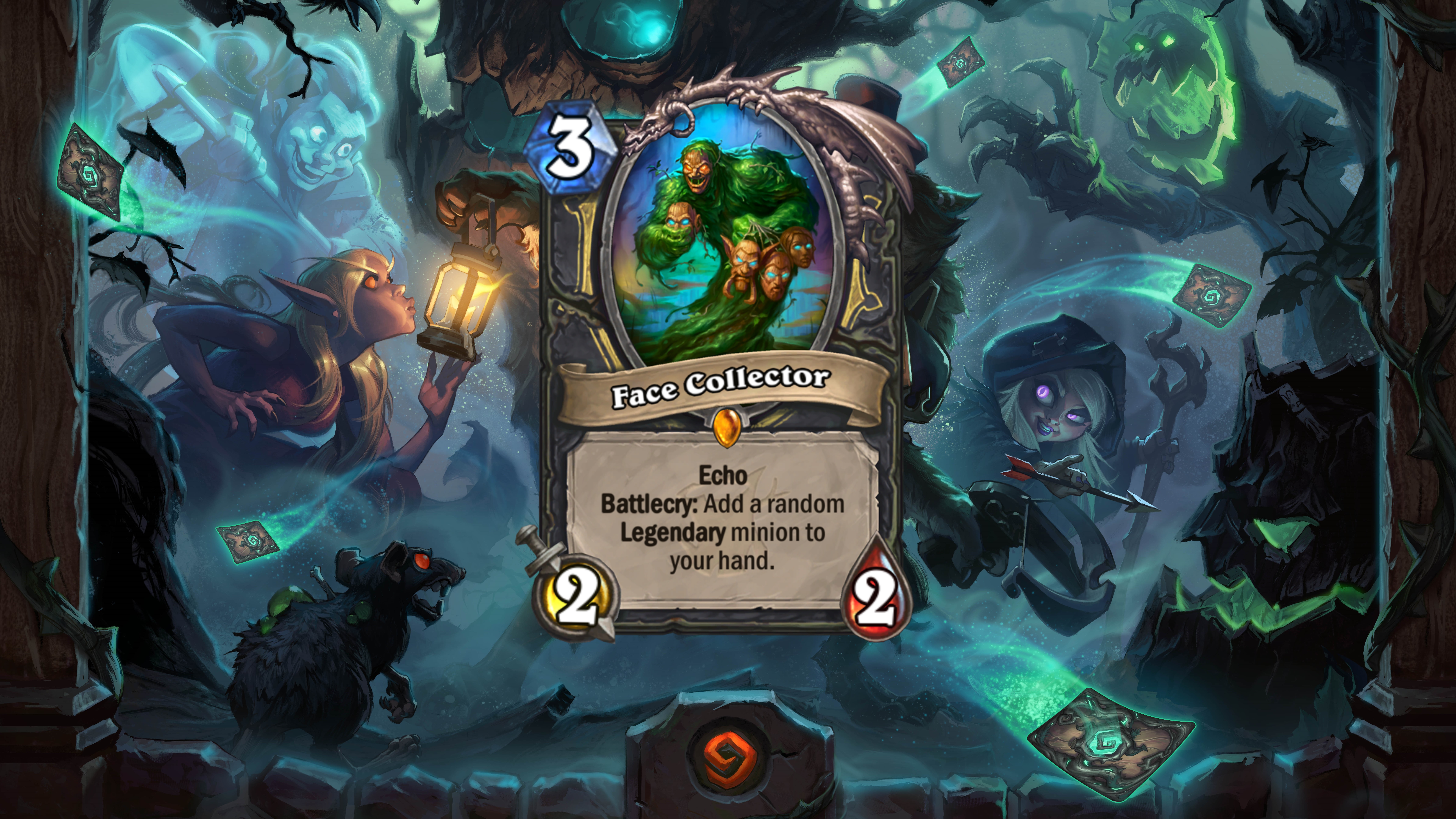
Face Collector: Rogue has a proud history of slow, value-generating legendary minions that never see play because they don't fit with the core tools the class has access to. Face Collector offers more of that. Played on turn nine three times, you get a Dopplegangster (four mana) and a spell (five mana) that puts three random legendary minions into your hand. Not only did Rogue never want to play the former, but even if the latter was its own spell, I don’t think any deck in the game would play it. Running him him out on earlier turns doesn’t make the play look any more appealing either.
Rating: 3/10 (Too weak)
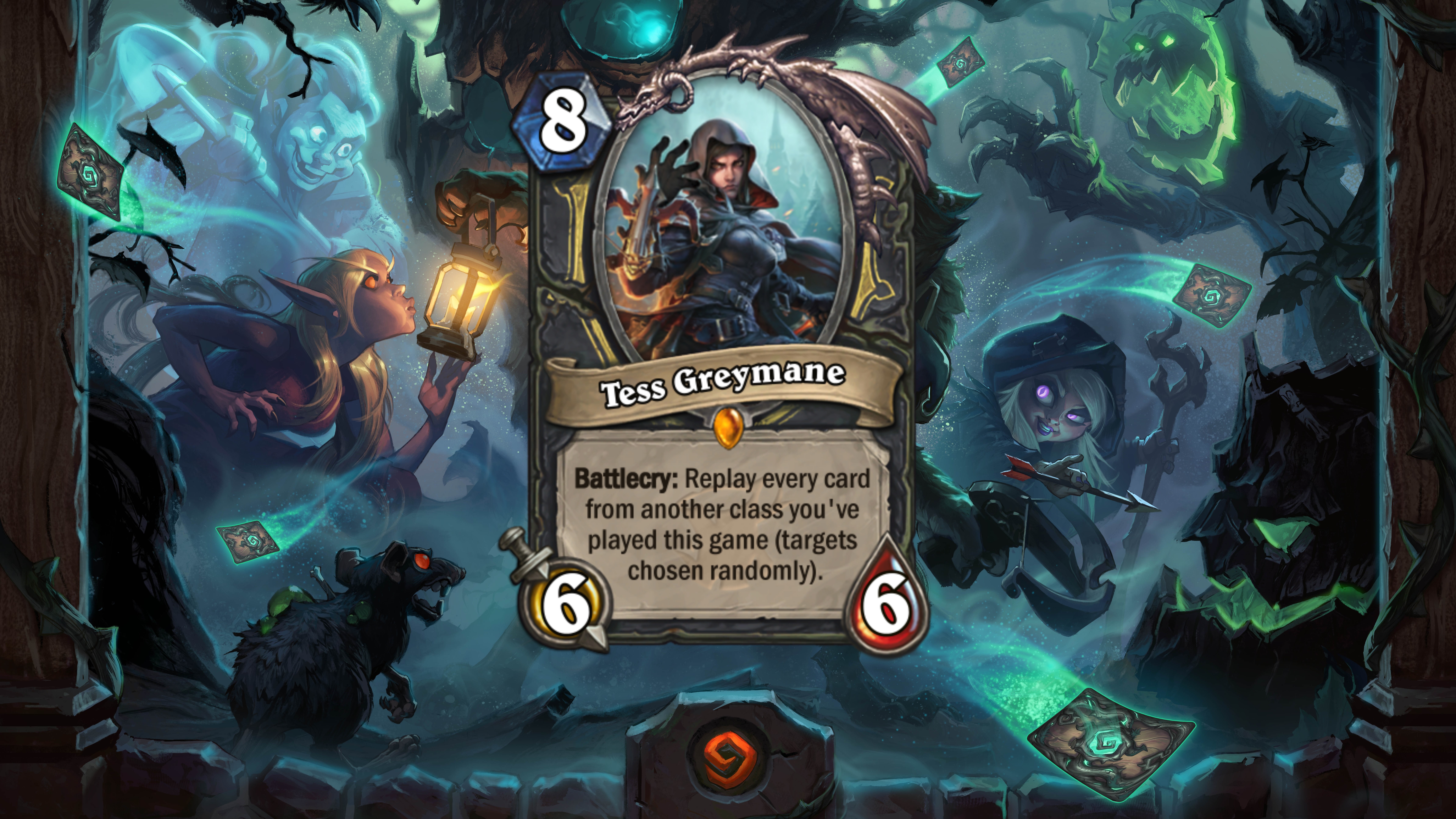
Tess Greymane: What an absolute pain this card is to evaluate. Tess replays every card from other classes that you have played that game: that means spells, minions, and weapons. She's at her strongest when summoning minions, giving her an 8-mana N’Zoth feel without sacrificing the body. Putting it bluntly, that’s absurd. She could also give you a Yogg-like effect (pre-nerf, because she will continue to play cards even if she dies in the process). She also replays Death Knight cards, too: that means Lich King and Arfus double-dip. This is the kind of powerful effect that could be deck-defining. You might also get a bunch of random junk from your opponent’s class and have her effectively do nothing when played. And the Burgle shell might not strong enough because your deck is built around random cards. And she’s certainly going to be bad in mirror matches. I dislike the idea of building an unreliable burgle Rogue at my core, but this is card that begs you to do it.
As an additional note: I don’t think Tess means you play other bad cards (like Pickpocket) to try to make her better. They eat up too much deck space and tempo. You likely just stick to the good burgle cards and hope it pans out.
Rating: 3/10 or 8/10 (Will either be too weak or deck-defining)
Priest
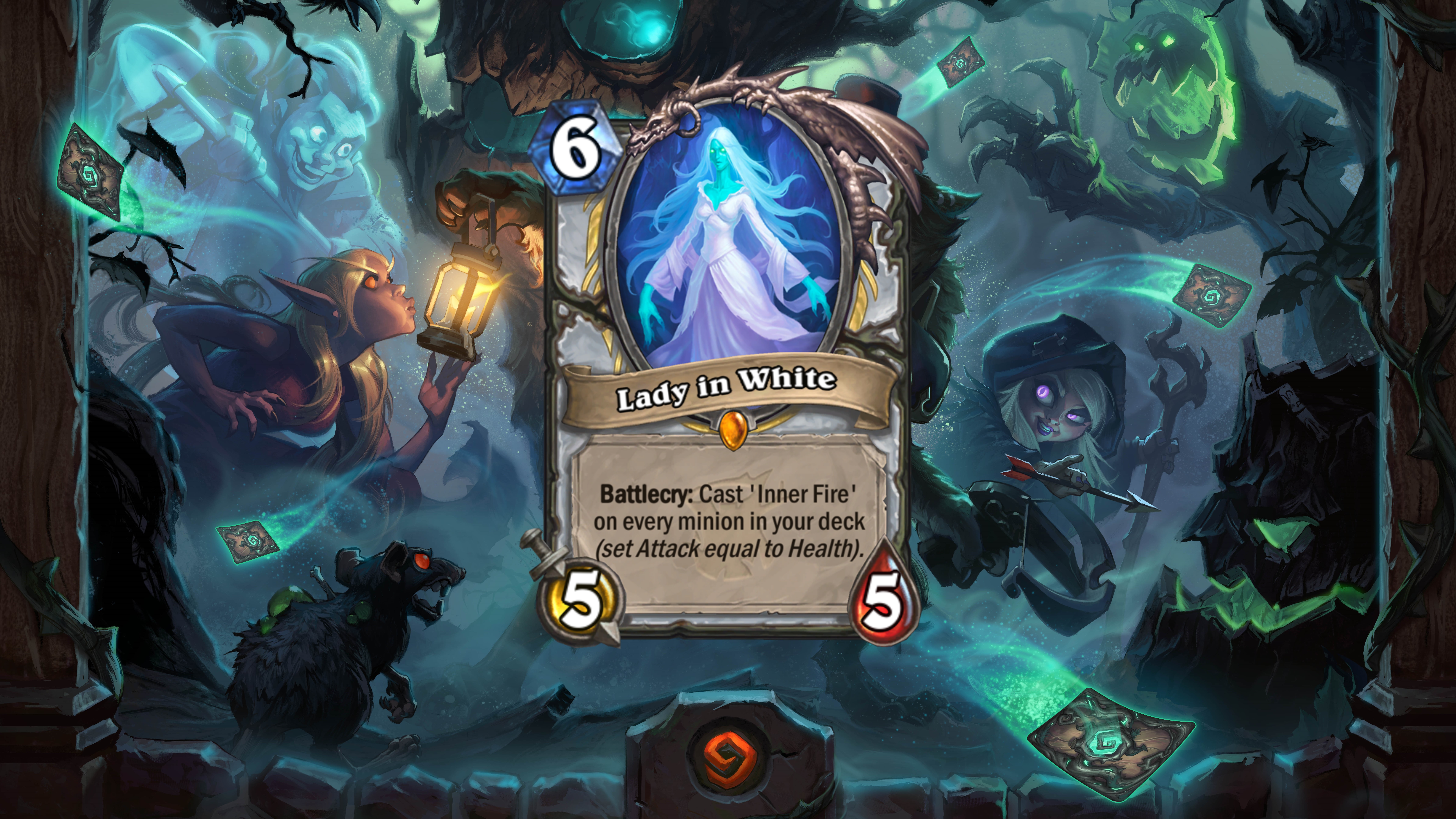
Lady in White: Prince Keleseth was a powerful card. The Mistcaller was a bad card. Lady in White feels likely to be much closer to the Mistcaller. Coming down on turn six, at a minimum, means the effect of this card might start to gather value on turn seven, assuming you draw a minion that got buffed which you want to play immediately. That also means you cannot build your deck around her, as Priest has no reliable means of drawing her from the deck on time. This card's effect isn't so good that you should consider including bad cards just to make the most of it. At least it can help meme out 5/5 Corridor Creepers. Lady and White can't blow games out on turn two and you can't double up the effect easily without access to Shadowstep. Sorry Ms. White, it's a no from me.
Rating: 3/10 (Too weak)
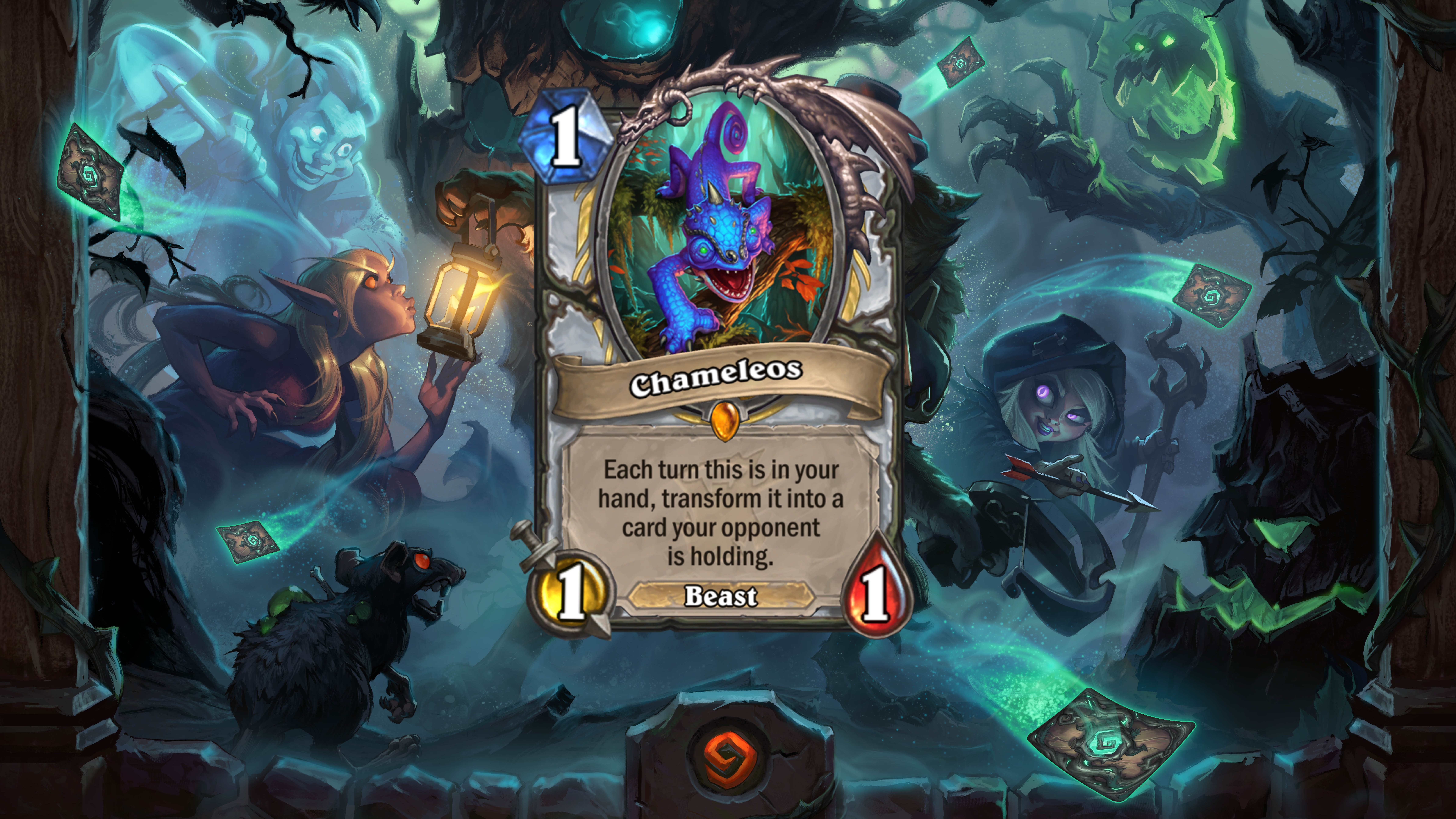
Chameleos: Look, we can agree this is an interesting effect, but spare me the excitement about how good this card is. It isn’t. We’ve seen iterations of this idea before with Molten Blade, Shifter Zerus, and Shifting Scroll. One large downside to all those cards is that they do anything until the turn after you draw them. Blanking a draw is a big deal. You might think Chameleos is better because on average it ought to transform into higher-quality cards. While that is true, it’s also true that they will be your opponent’s cards, meaning they almost certainly synergise better with your opponent’s game plan than yours. Or, to put it another way, there's a good reason why Mind Vision doesn’t see play. Chameleos is good for one thing: slowly extracting information about your opponent’s hand over several turns. That’s useful information to have, but not worth the card slot or the time it takes to get.
Rating: 3/10 (Too weak)
Warlock
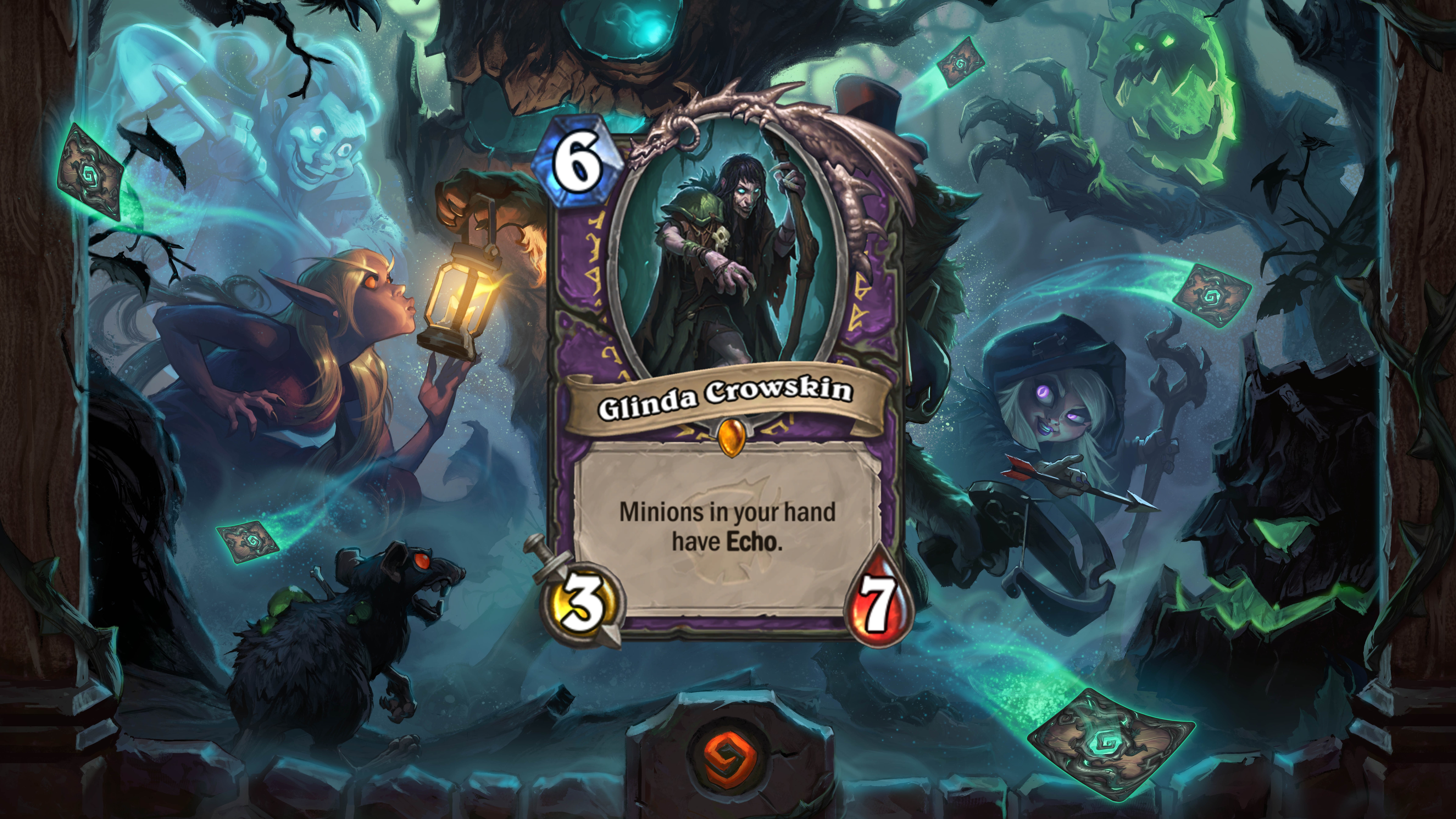
Glinda Crowskin: When you see this card, you immediately think about combos. What's likely to hold the really degenerate stuff back is going to be the cost. At six mana you can’t usually rely on this doing much on the turn it comes down, even if you manage to pull off some Summoning Portal shenanigans. You also can’t rely on it living for a turn, as Glinda carries the same “Kill me now” sign as Fandral and Lyra. Still, this might be a card that just slots into Zoo, as you aren’t too sad if it dies, but if it lives the upside is massive, potentially enabling you to “draw" up to six extra copies of a 1-cost minion on the following turn. It might even work with Sea Giant in that kind of list.
Rating: 7/10 (Has potential)
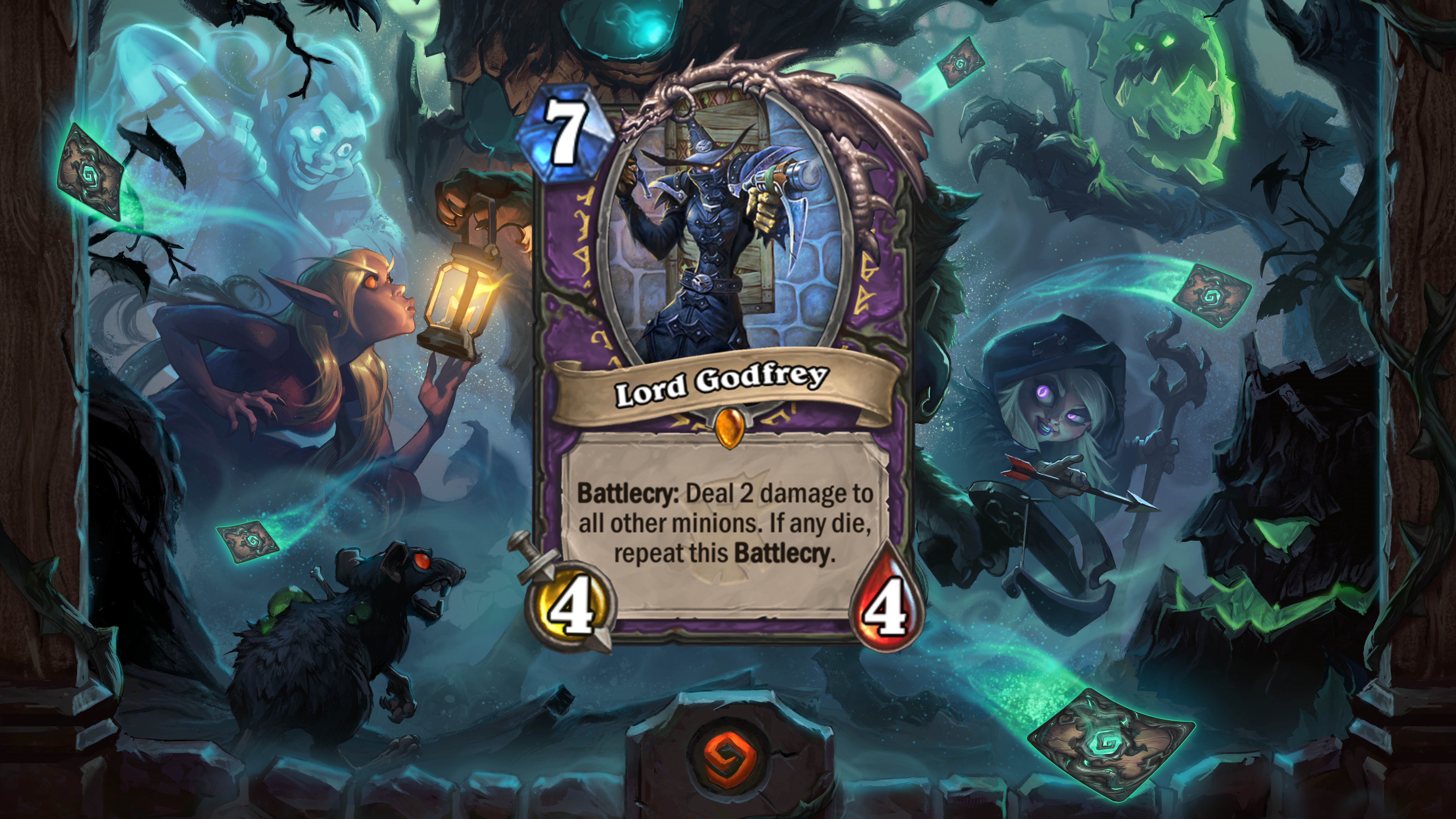
Lord Godfrey: Control Warlock lists used to run Tainted Zealot because spell-damage combined with Defile is really, really good. This provides the same sort of effect from a single card, but costs seven mana and leaves a 4/4 body behind for you. In many cases, Godfrey's Battlecry is going to clear the entire board and leave you with a net tempo gain. Unlike many other sweeper spells, it also deals with Divine Shields and Deathrattles a lot of the time. This is a reasonably costed card with a powerful effect that already fits into a top-tier deck. Praise the Lord.
Rating: 8/10 (High Potential)
Hunter
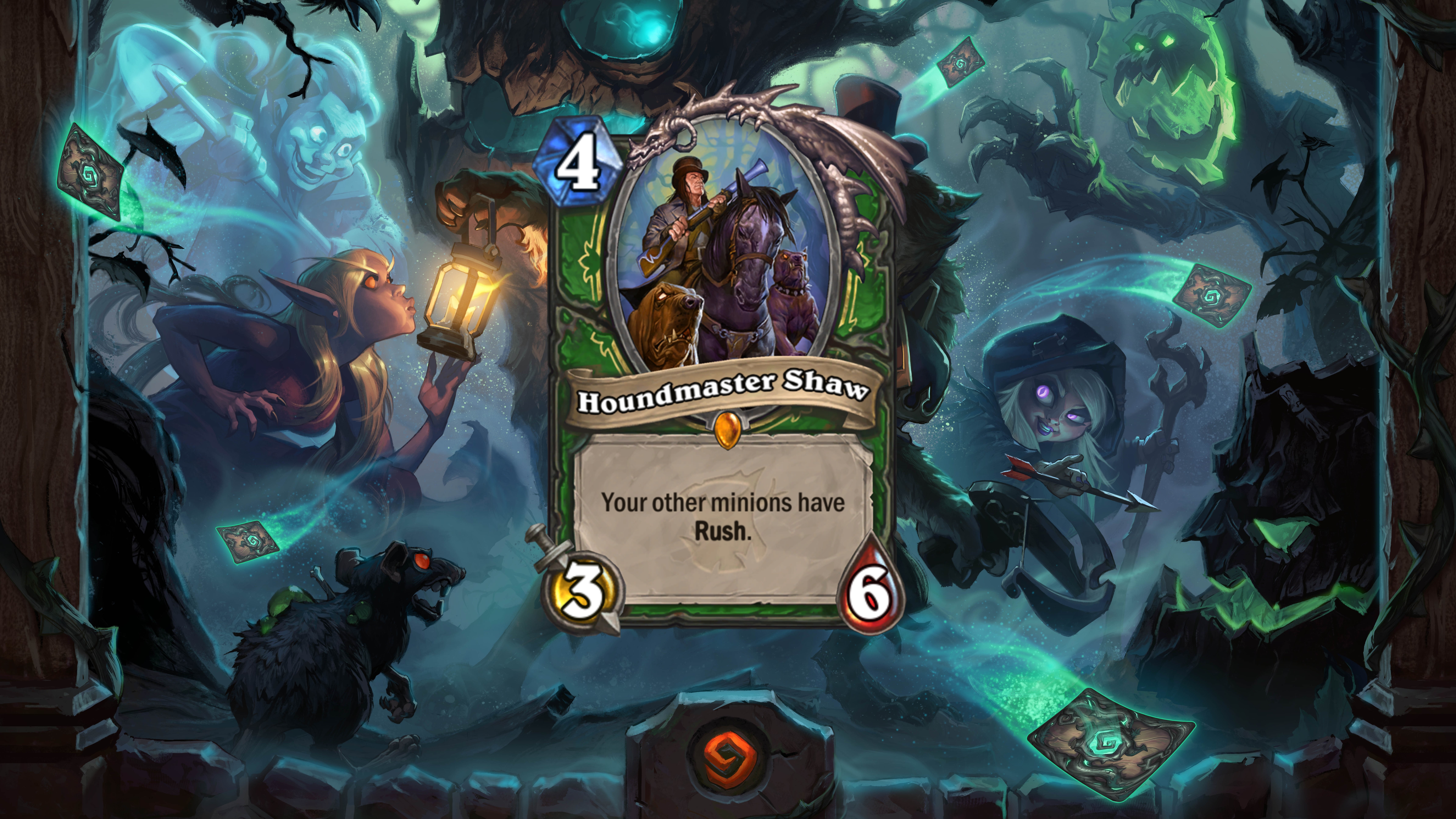
Houndmaster Shaw: There’s a lot to like about this card. The stat line is premium for the mana cost, making it hard to remove on turn 4. As with Fandral, if it lives it can very quickly start swinging a game in favor of the person playing it. Crucially, unlike Tundra Rhino, the effect isn't restricted to beasts. The one negative factor is that Rush doesn’t let your minions go face, and as you may have noticed Hunter decks really want to go face. The initiative gained by enabling the minions you play to immediately trade with your opponent's board is significant, but it relies on your opponent playing minions that you want to hit to make it good. Houndmaster Shaw should help midrange Hunter decks which want to control the opponent’s aggression before piling on damage, and will also help Rexxar chew through Taunt walls with cards like Lesser Emerald Spellstone.
Rating: 7/10 (Has potential)
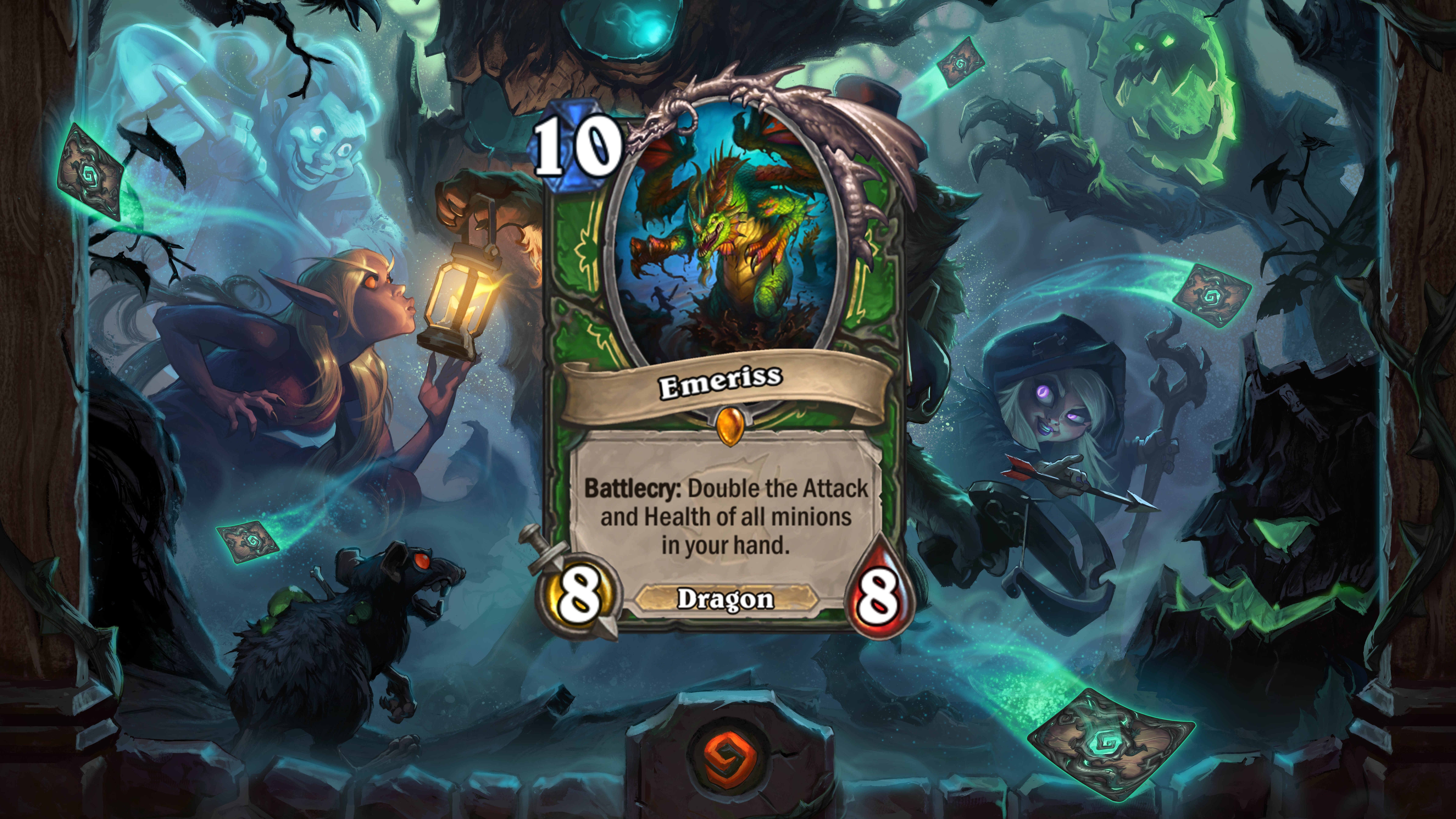
Emeriss: This dragon is a big, dumb, pile of stats that makes no immediate board impact plus the promise of a future payoff of more stats. Did I mention that it's also super expensive? Go ahead and theorycraft how you’ll find your Leeroy and Emeriss with Stitched Tracker, then spend 10 mana on your Emeriss, then another 10 on your Faceless for a double 12-attack Leeroy, then cry when your opponent has a Voidlord in the way. Taunt is a thing. So is this card being terrible.
Rating: 2/10 (Horrible)
Druid
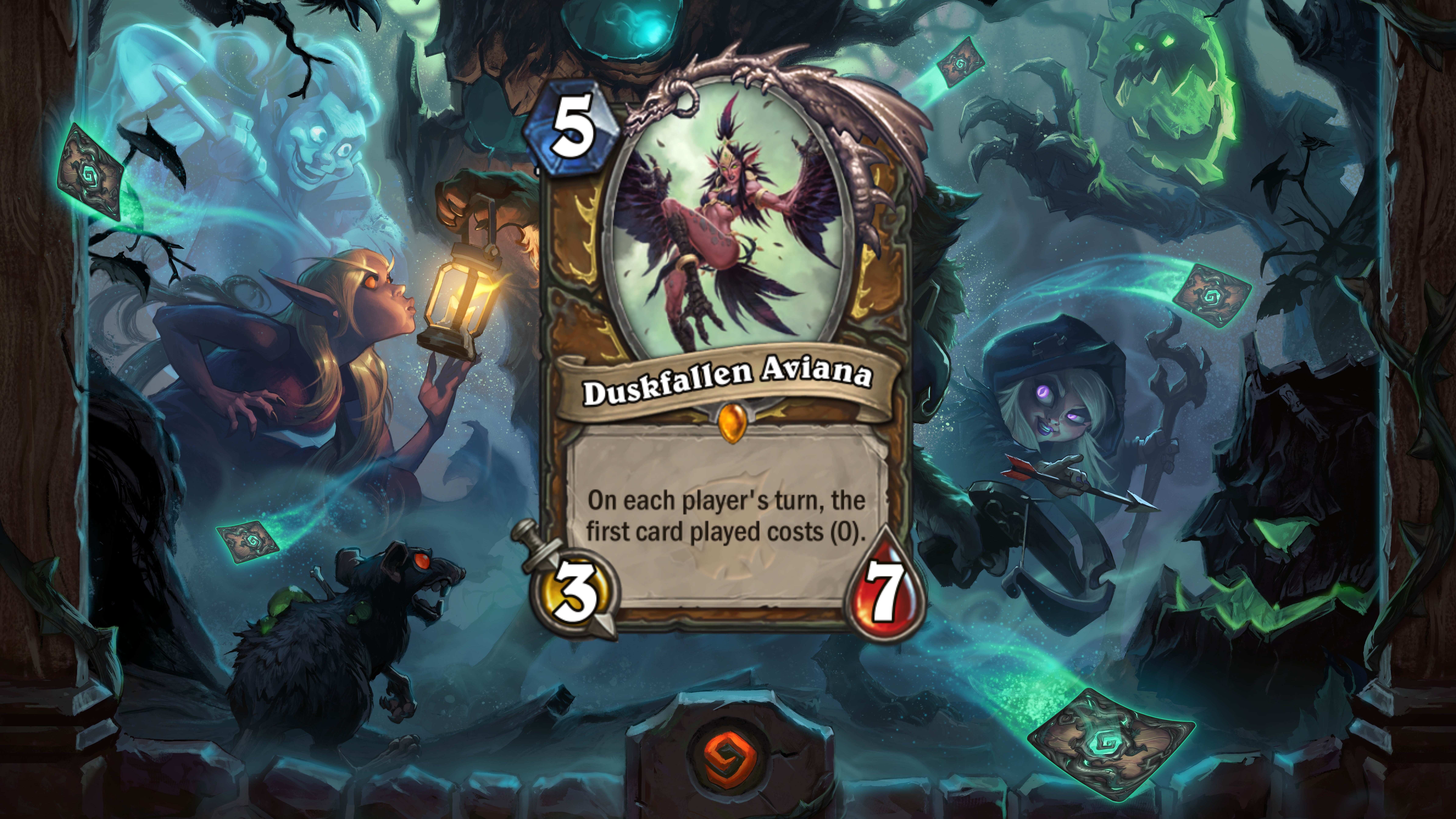
Duskfallen Aviana: Free mana in Hearthstone is powerful and dangerous. That’s why giving it to your opponent is a bad plan. Duskfallen Aviana* effectively offers Druids an Alarm-o-bot: a minion that allows you to pull off disgusting combos if it lives a turn. That something will usually involve Malygos, Moonfires, and Swipes in Druid. While the frail Alarm-o-bot rarely lives, Aviana’s 3/7 body is much more substantial. However, the fact that she gives your opponent free mana usually means whatever removal targeting her is going to cost zero, providing your opponent with a turn to pile on tempo in the process of ruining your five-mana play. In that sense, she’s a bit like Temporus from the previous set: high risk, high reward. Temporus worked sometimes when picked off a Discover, but no decks were built around the card. The same will hold true here.
Rating: 2/10 (Horrible)
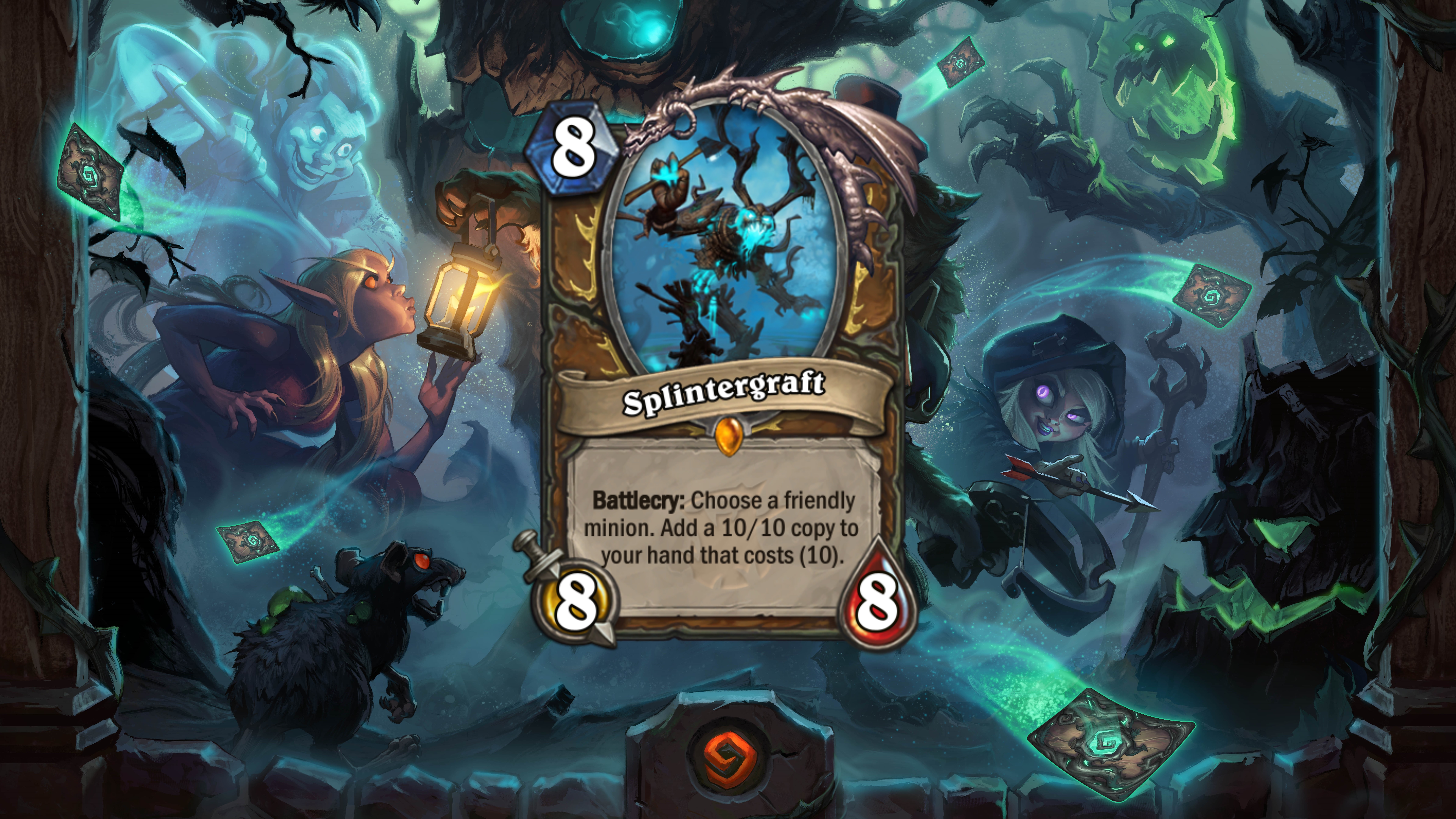
Splintergraft: For reference, 8 Mana in Hearthstone usually buys you a lot—like a Lich King, a Medivh, or a Primordial Drake. So let's see what Splintergraft gives us: a vanilla 8/8 body that won’t protect you with Taunt or help clear a board. That's not much impact. The benefit you get is a 10-cost, 10/10 copy of one of your minions placed into your hand for a later turn. Such an effect will be good when paired with a minion that has Taunt or Charge, but having one of those set up and ready to be copied is asking quite a bit of Splintergraft. Even with the correct set up, this merely becomes a useful, but slow, value proposition. Those kind of cards don't tend to have many constructed applications in Hearthstone, and I don’t anticipate Splintergraft being much different.
Rating: 3/10 (Too weak)
Mage
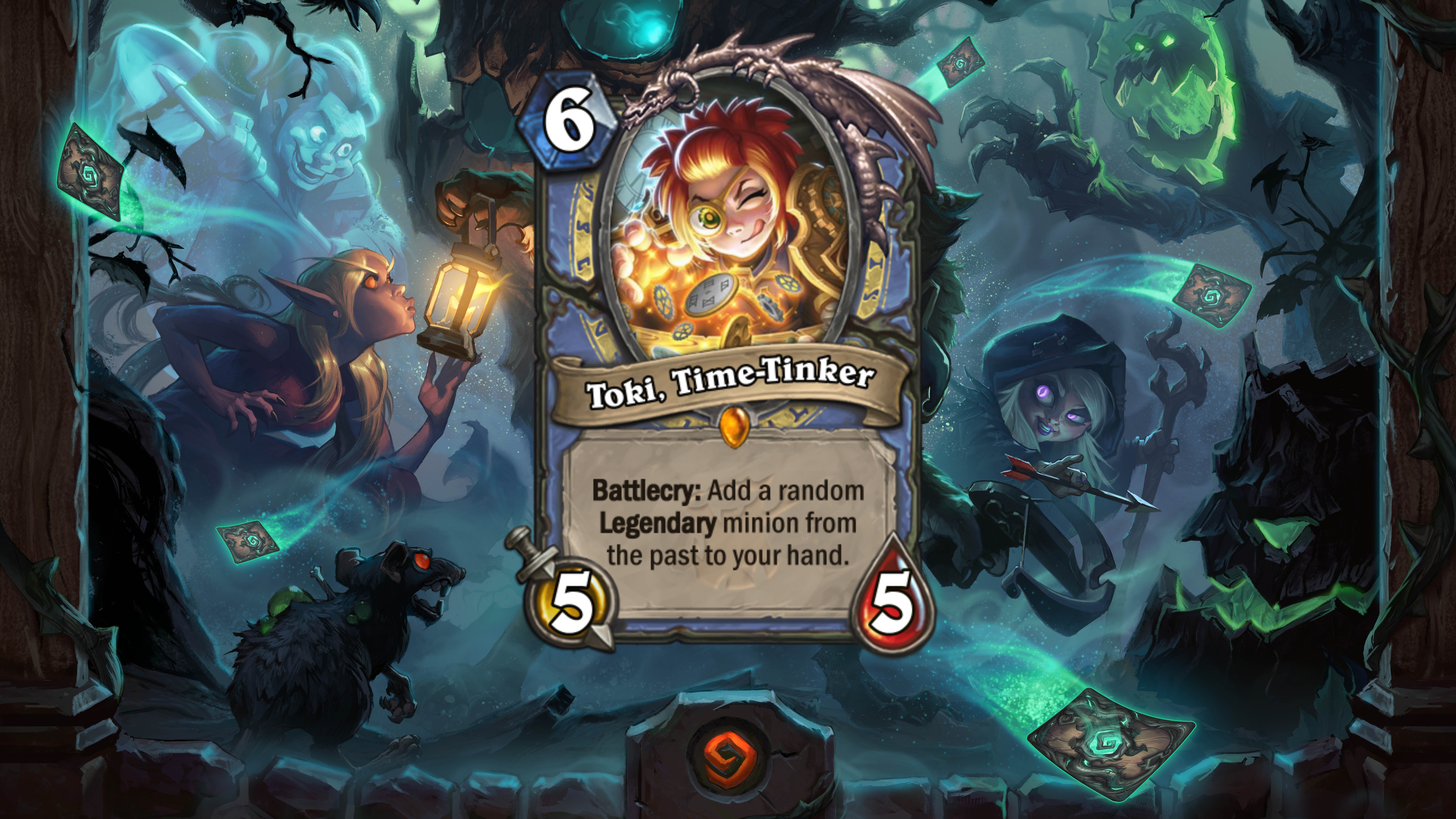
Toki, Time-Tinkerer: Did you think Face Collector offered just a bit too much value and flexibility? Do you lie awake thinking about Rag, Doc Boom, and all the other old pay-to-win legendary minions? Then Toki might be for you. Weighing in at a six-cost 5/5, her body is unimpressive. The Battlecry of drawing a random, Wild-exclusive legendary minion seems both underwhelming and incredibly unreliable. If you’re that desperate to generate value, just play Pyros or Elise the Trailblazer. Honestly, without Ice Block, the future of value-oriented Mages may be dubious without even considering trying to cram a card like this into your deck.
Rating: 3/10 (Too weak)
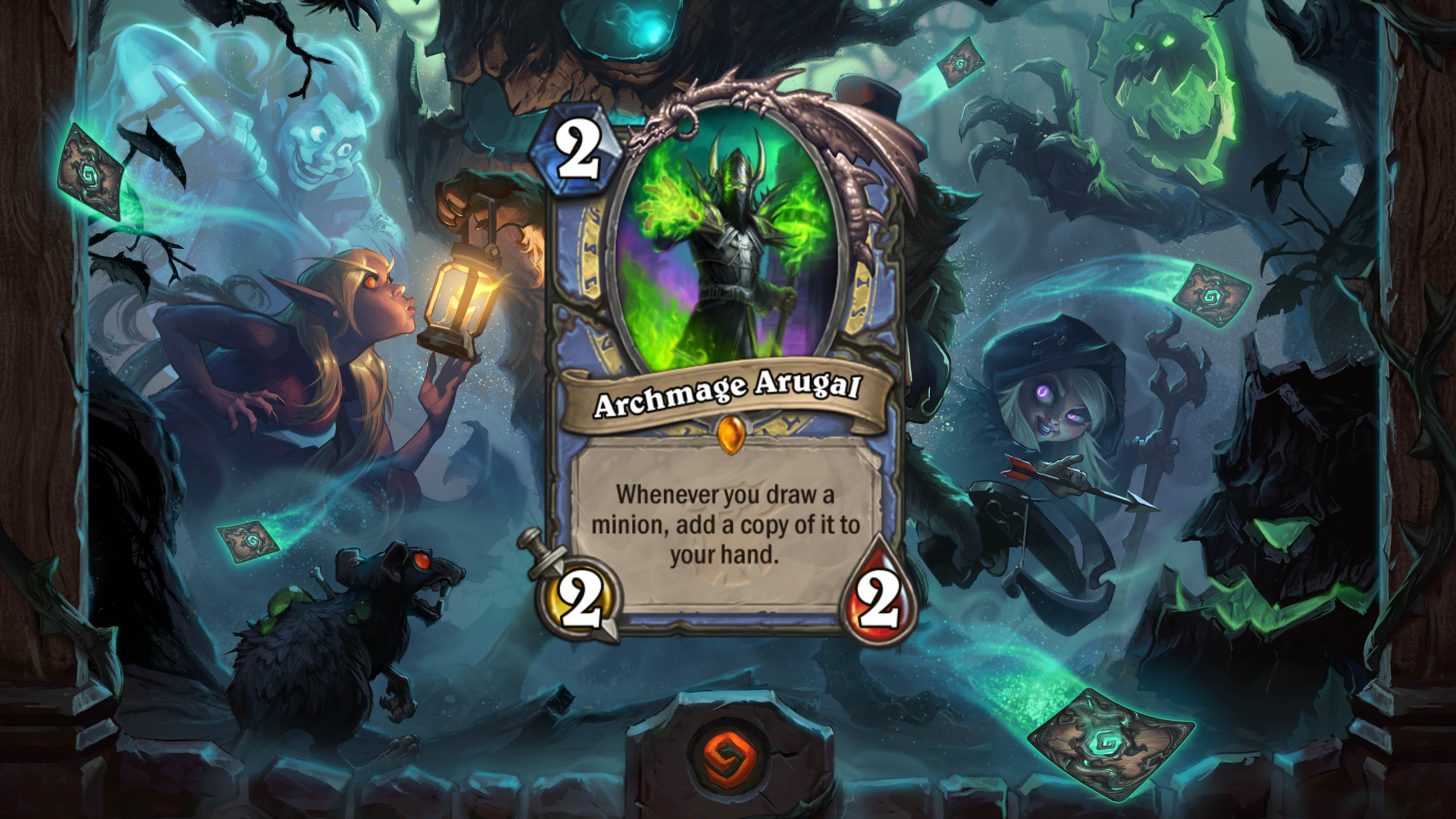
Archmage Arugal: On its own this card has potential. Dropping this on turn 2 or coining it on 1 has a pretty good chance of getting at least a card out of it. In that respect, it compares with cards like Loot Hoarder, which have been played in their own right before. It comes with a little less reliability and a lot more snowball potential. What makes this card interesting is how well it pairs with the newly-released Book of Specters. Both ask Mage to play a minion-heavy deck, and both can provide a lot gas for that strategy. Combo them together and you’re looking at about 5 cards for 4 Mana. I could see both cards fitting into an elemental mage shell rather well. The natural question is whether that deck is good in the meta. If it is, I think Archmage sees play in it. If it’s not, this card probably isn’t very good.
Rating: 6/10 (Has potential)
Paladin

Prince Liam: Do you like 5-Mana 5/5 minions? I hope so, because that's all Prince Liam will give you on both the turn you play him and likely most of the turns after. The idea here seems to be a late-game plan for a deck running a sufficient number of 1-cost cards: you don’t win the early game as hoped, so you drop Liam to avoid topdecking low-impact cards in the later stages. The problem with that is a) your original game plan didn’t seem to work, so you’re likely already not in the spot you wanted to be, and b) you’re trying to fight for the late game with random legendary minions, many of which are probably less than ideal, especially against a deck that is built to win the late game. Oh, and (c) you still need to draw those legendaries after you've played Liam. It’s a bit better than a vanilla 5/5, just not by a whole lot.
Rating: 5/10 (Too average)

The Glass Knight: This is an upgraded Silvermoon Guardian with the ability to rebuy the divine shield when you heal. So, a perfectly respectable minion, if a little boring. The ability to get the shield back is probably unlikely to occur all that often, given that you’d need to be playing heal cards (which Paladin generally doesn’t), you’d need to have already taken damage, and need to have the shield been popped without the Knight also dying that turn. That’s asking for a lot to come together for this to get much value from its ability. It’s not a bad minion, just probably not unfair enough to be a good one.
Rating: 5/10 (Too average)
We'll add the remaining class legendaries as they arrive. On the next Page: The Neutral legendaries.

